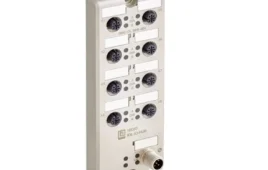Honeywell and the U.S. Army are testing a prototype of an advanced helmet-mounted vision system in the Bradley Fighting Vehicle, one of the U.S. Army’s most notable ground vehicles.
The vision system, originally developed and tested by Honeywell and the U.S. Defense Advanced Research Projects Agency (DARPA) under the Ground X-Vehicle Technologies program, applies augmented and virtual reality technology to a helmet-mounted display. For armored vehicle operators, this results in a natural viewing experience of their surroundings in a “closed-hatch” environment, providing much better protection for the crew.
The U.S. Army Research, Development and Engineering Command’s Ground Vehicle Systems Center (TARDEC) has successfully tested the prototype vision system at Camp Grayling, Michigan, and user testing will continue at Fort Stewart, Georgia, in the coming months. Named the Ground X-Vehicle Technologies (GXV-T) Crew Station Augmentation Concept, this technology is augmented by an existing suite of 360-degree awareness sensors that will collectively deliver a more comprehensive and mission-effective driving experience for combat vehicle operators.
New U.S. Army ground vehicle programs could leverage this capability to enhance soldier protection while allowing remote monitoring and control of robotic and optionally manned vehicles. This would enable vehicle operators to drive, navigate and control multiple vehicles, while also keeping a human in the loop for assured control.
“As the battlefield evolves and newer technologies become available for us to use, so does our research and approach to future combat vehicles,” said John Vala, Crew Augmentation Simulation and Test lead for TARDEC. “This emerging capability is a natural evolution of the closed-hatch environment, and we’re excited about the potential for application of this type of capability to current and future Army ground vehicles. We’re particularly looking forward to testing the limits of the vision technology in the prototype headset. With the inputs from various sensors and cameras outside the vehicle enabling this new capability, soldiers may potentially see more detail at greater distances without having to rely on the mirrored sights used today or leaving the protected confines of the vehicle.”
“Our work with the U.S. Army and DARPA on virtual and augmented reality is a testament to how government and industry collaboration can drive forward truly innovative solutions that will help our current and future military forces retain a technological edge,” said Bill Hancock, senior fellow and GXV-T program manager, Advanced Technology, Honeywell Aerospace. “From the successful testing of our windowless driving technology on a GXV-T vehicle in the desert of Arizona to this installation on the widely recognized Bradley Fighting Vehicle, we are developing a technology that directly improves the mission effectiveness of our military and safety of our soldiers.”
The helmet-mounted vision system includes a range of forward-facing cameras that deliver imagery projected into the left and right eye of the user through a pair of holographic optical elements. The approach allows operators to perceive depth in the imagery while showing a wide field of regard without causing nausea or eyestrain. The ability to simulate direct-sight conditions in a way that mimics natural viewing is a key factor in achieving fully operational, closed-hatch driving. The helmet-mounted system also allows a combination of other cameras to relay views from other angles around the vehicle, so operators have awareness beyond what is directly in front of them.
The installation of the prototype on the Bradley Fighting Vehicle is the first of several steps to demonstrate the proof-of-concept and effectiveness of the advanced helmet-mounted vision system. The technology is scheduled to continue testing throughout 2018.
Filed Under: Virtual reality, TEST & MEASUREMENT




